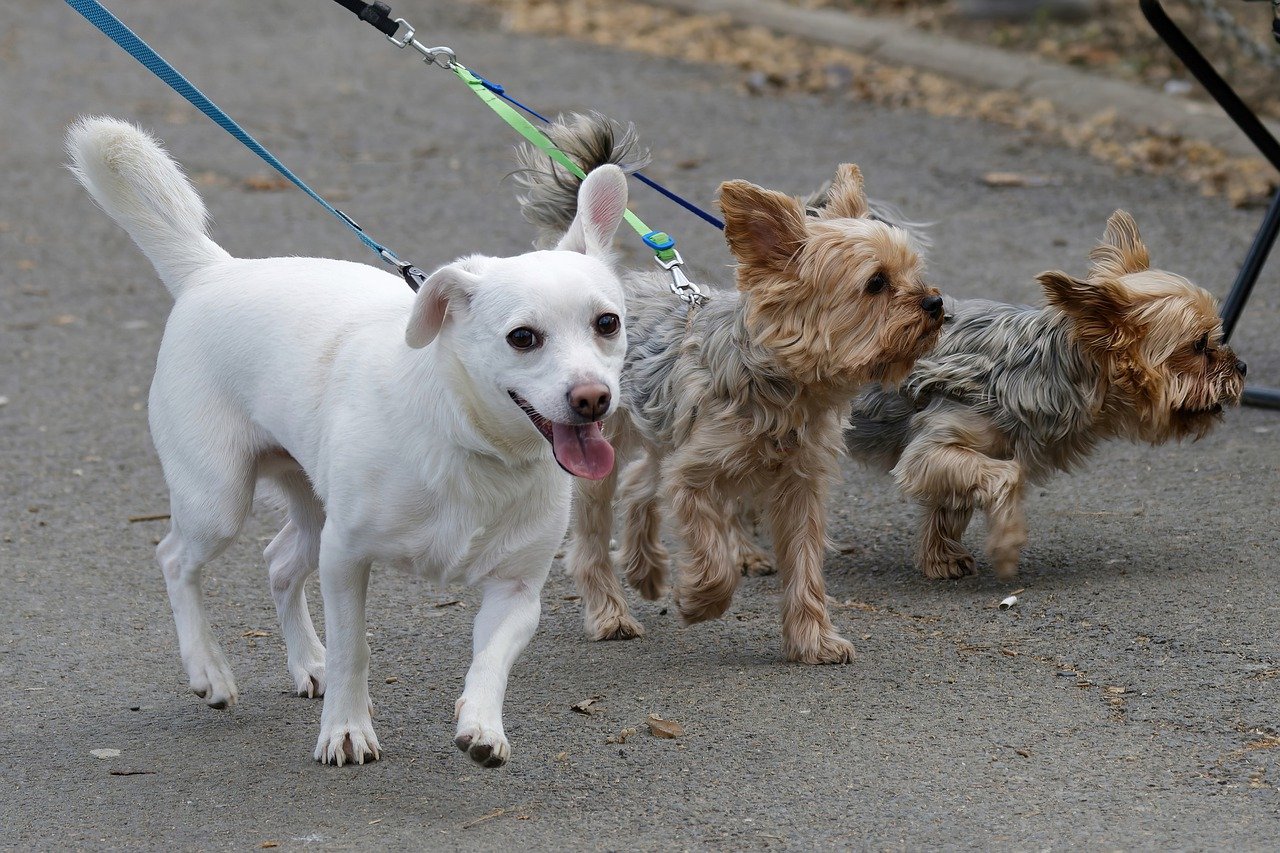If you have a big backyard, you can let your dog sprint to their heart’s content at full speed. With nothing to stop them and safety measures in place, this can be a fantastic way to let them blow off steam. But is this behavior still acceptable when on a leash for daily walks? Dogs that pull ahead of owners, trying to run or leap at nearby points of interest, put themselves and their owners at risk, and all dog owners should work to address this behavior. Let’s take a look at leash pulling behaviors, and what can be done to address them.
Why Dogs Pull on the Leash
Dogs pull on leashes for a mix of instinctual and learned reasons, with innate curiosity about the world around them being a driving factor. A walk presents your dog with many exciting new scents and sights, urging them to explore as much as possible, as quickly as possible. This exploratory behavior is natural but becomes problematic when constrained by a leash, leading to the pulling behavior many owners experience.
Even without these external factors urging a dog to sprint forward past their owner, it could be a simple matter of habit. If a different family member used to walk your dog at a quicker pace or you have slowed down over time, your dog may still be used to moving quicker during daily walks. No matter what is causing their behavior, it is your duty to address it before it causes problems.
The Problems with Leash Pulling
You might think that leash pulling is, at most, a minor annoyance, but it poses significant risks to both dogs and their owners.
If your dog is pulling against a leash, they are experiencing constant strain against their neck, leading to bruising or potential choking. While there are different leash and harness designs that aim to reduce strain on dogs, they shouldn’t be relied upon to completely eliminate physical risks. Owners are not immune to the hazards of leash pulling either, as it increases the risk of falls in situations where a dog’s sudden lunge catches an owner off guard.
Beyond the physical dangers, leash pulling can strain the psychological bond between a dog and its owner. You don’t want your dog to associate daily walks with discomfort and stress, which should be one of their favorite parts of the day. While it may seem silly to think that your dog would bring this upon themselves and then have a negative reaction, they might not know how or why they feel pain when pulling ahead. As a dog owner, you have a responsibility to take reasonable steps to address this behavior and help them learn how to act.
Training Techniques to Stop Leash Pulling
Instead of punishing or scolding a dog who constantly pulls ahead, training it to behave differently is the best path forward for all parties. You will experience less stress during walks, and your dog will have a better time with less pain and restrictions.
To help with training, purchase gear designed to discourage pulling, such as harnesses or head collars. Their design provides owners immediate control over the dog’s movements, making the training process easier. During training, they can also help limit the physical consequences of excessive pulling and prevent injuries.
However, equipment alone is not a solution. Pair these tools with positive reinforcement techniques to get the best bang for your buck and help your dog develop healthy walking habits. On walks, reward good behavior with treats, praise, or play. These rewards encourage the dog to repeat these behaviors, reinforcing the training and preventing them from associating this new behavior with negative reactions like before.
Daily walks should be used as opportunities to reinforce these lessons, gradually teaching your dog that walking calmly and not pulling is rewarding and enjoyable. Even before you leave the house, integrate previous training to start the walk in a calm state of mind. Good ways to start walks include training your dog to remain calm when seeing a leash, sitting down and allowing you to place the leash on them, and calmly walking out the front door instead of rushing outside.
Are you looking for help training your dog to respect the leash and remain calm during daily walks? If you are a Sarasota or Manatee dog owner, contact Gulf Coast K9 Dog Training today to learn how our dog training programs can help.





